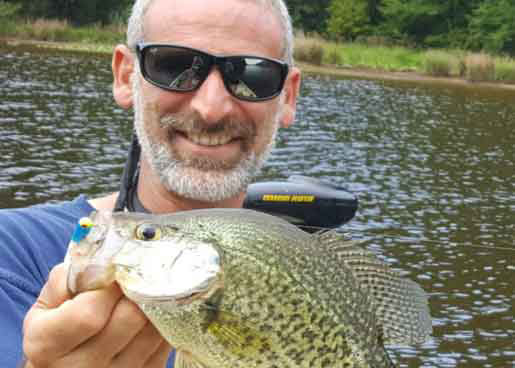As water temps in reservoirs first begin to drop, usually in mid- to late-September, crappie will put on the feed bag to fatten up for winter, and often become uber-aggressive when they see small, easy prey. This is a time when tubes become incredibly effective. Ready to go tubing for crappie?

- You’ll want an ultralight set-up for this; four-pound test is ideal and six will work, but eight is simply too heavy. Either braid or mono will work. Tie on a 1/16th or 1/32nd of an ounce jighead, then slip on a tiny one- to two-inch tube. Blue/white, red/white, white, and chartreuse are top color picks.
- Look for trees lying in the water, brush piles, and especially beaver dams. Cast as close as you dare to the snag, then retrieve slowly while giving a subtle twitch of the rod tip with every rotation or two of the reel.
- If you catch fish only when the tube splashes down danger-close to the snags (which happens quite often), creep up close moving slowly and stealthily with a paddle or electric motor. Then dangle five or six feet of line off your rod tip, stretch out your arm and rod, drop the tube straight down among the branches, and give the rod tiny vertical jigs of just a couple inches. When you get a hit, try to pull the fish straight up and out from the snags.
If you want to target the monsters, check out Casting for Slab Crappie and The Quest for Trophy Panfish, for some tips related to finding the lunkers in the school.